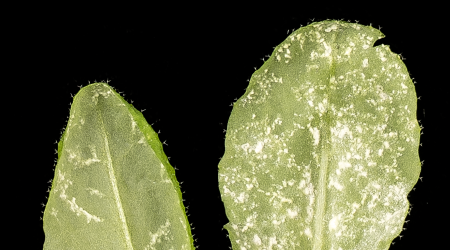How parasites modify plants to attract insects

Pathogens can alter their hosts, for example malaria parasites can make humans more attractive to mosquitoes, but how they do it has remained a mystery.
Scientists from the John Innes Centre on Norwich Research Park have identified for the first time a specific molecule from a parasite that manipulates plant development to the advantage of the insect host.
“Our findings show how this pathogen molecule can reach beyond its host to alter a third organism,” said Dr Saskia Hogenhout.
Leaf hoppers are tiny sap-sucking, highly mobile and opportunistic agricultural pests. Certain species can acquire and transmit plant pathogens including viruses and phytoplasmas, which are small bacteria.
Dr Hogenhout and her team focused on a phytoplasma strain called Aster Yellows Witches’ Broom, which causes deformity in a diverse range of plants.
“It is timely to better understand phytoplasmas as they are sensitive to cold and could spread to new areas as temperatures rise through climate change,” said Dr Hogenhout.
Infected plants grow clusters of multiple stems which can look like a witches’ broom or in trees like a bird’s nest. The strain was originally isolated from infected lettuce fields in North America.
The phytoplasma depends on both the leafhopper and the plant host for survival, replication and dispersal.
The new findings show how it manipulates the interaction of the plant host and insect vector to its advantage.
The scientists sequenced and examined the genome of the witches broom phytoplasma and identified 56 candidate molecules, called effector proteins, which could be key to this complex biological interaction.
They found that a protein effector SAP11 reduces the production of a defence hormone in the plant that is used against the leafhopper.
As a consequence, leafhoppers reared on plants infected with witches broom laid more eggs and produced more offspring. The leafhoppers may also be attracted to lay eggs in the bunched branches and stems.
The higher fecundity rate is probably matched by a similar increased rate in transmission of the witches broom phytoplasma by leafhoppers to other plants.
“Phytoplasmas that can enhance egg-laying and offspring numbers in leafhoppers are likely to have a competitive advantage,” said Dr Hogenhout.
Given their opportunistic nature, the leafhoppers are likely to migrate to uninfected plants and spread the pathogen.
“This is a vivid example of the extended phenotype, a concept put forward by Richard Dawkins, where an organism’s phenotype is based not only on the biological processes within it but also on its impact on its environment,” said Dr Hogenhout.
The research was funded by the Biotechnology and Biological Sciences Research Council and The Gatsby Charitable Foundation. It will be published in PNAS.


